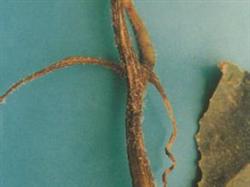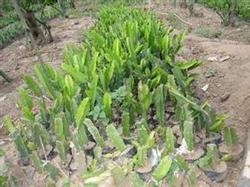Spring cultivation techniques of cantaloupe in greenhouse
Cantaloupe is favored by the general public because of its rich nutrition, sweet taste, cool summer heat and so on. Since 2002, with the technical support of Wu Mingzhu, academician of * * Hami Melon Research Center, Hami melon has been successfully introduced, demonstrated and popularized in Jiading District, and new varieties of cantaloupe which are more suitable for the climatic characteristics of the southern region have been screened out. A set of relatively mature cultivation techniques for cantaloupe in greenhouse has been formed, with a planting area of nearly 300 mu this autumn. The spring cultivation techniques of cantaloupe in greenhouse are introduced as follows: first, varieties should be selected which are suitable for the climatic characteristics of the south and have strong disease resistance. The main varieties recommended in this area are: Xuelihong, Xianguo, 98-18 (green skin and yellow skin) and so on. Second, the field should choose the stubble of cantaloupe and continuous cropping land, we should choose the rice stubble field which has not planted melons in 3 years, high topography and good drainage. Sandy soil with rich organic matter and good permeability is the first choice for the cultivation of Hami melon. 3. One month before soil preparation, border cultivation, fertilization and planting, ploughing should be carried out at a depth of 25cm to 30cm, while supporting ditches (Daming ditch, operation ditch and outer ditch of the shed) should be opened, and one-time full application of base fertilizer should be applied to the whole tillage layer, generally about 1000 kg of commercial organic fertilizer per mu, 30 kg of potassium sulfate ternary compound fertilizer (N ∶ L ∶ Kraft 15 ∶ 15 ∶ 15) and 50 kg of superphosphate. Must be high border, high ridge, the border surface into a tortoise back, bow back 25 cm; border surface covered with plastic film (transparent plastic film in spring), conducive to moisture conservation, moisture and grass control. 4. Seedling transplanting 1. Seed treatment: dry seeds can be dried and baked in a 60-69 ℃ constant temperature drying box for about 3 days. The disinfection and sterilization effect is good. If there is no such condition, the seeds can be dried in strong sunlight for 2 days. 2. Sowing: the sowing time in spring is generally controlled in the first and middle of January. Spring seedling breeding emphasizes heat preservation and disease prevention, the seedling bed is covered with multi-film, and the ground is covered with electric heating line. The seedling bed temperature is two high and two low, before emergence, the seedling bed temperature is controlled at 28: 30 ℃, before the first true leaf is unfolded, the seedlings are easy to grow and decrease the temperature, the bed temperature should be kept between 23-25 ℃ during the day and 18-20 ℃ at night. With the growth of seedlings and the rise of external temperature, the vents can be enlarged appropriately and the ventilation time will be lengthened accordingly. The seedlings were refined at low temperature one week before planting, so that the seedlings gradually adapted to the external conditions. Amisida spray can be used for disease prevention at seedling stage for 1 or 2 times. The seedling age in spring is about 30 days, and it is transplanted at the stage of 3 leaves and one heart.
- Prev

Opinions on production management of cantaloupe in greenhouse at present
This is cantaloupe suffering from a typical vine blight or muskmelon black rot. In general, the initial symptoms are mostly in the vine joint, and there are light yellowish-green oil stains, and the disease often secretes russet colloid, which becomes a dark brown mass after drying. In the later stage, the disease spot is dry and sunken, and the surface is pale and fragile. Prevention and control methods: 1, cultivation.
- Next

Technical opinions on protected cultivation of Hami Melon in Spring
Pitaya has produced succulent stem plants in the cactus family for many years, with a height of more than 2 meters, illusory growth in very soft, loose and fertile sand, avoid waterlogging, 28 ℃ to 38 ℃ grow well. First, the cuttage is the most suitable for spring and summer, the cuttings should choose stem nodes with full growth, and the discarded branches can also be used for cuttings.
Related
- Moge, come on! The staff of the peasant association in the producing area of cantaloupe were frightened when the crowd gathered.
- Causes and Solutions of low Fruit setting rate of Apple
- Symptoms and control measures of passion fruit virus disease
- Fruit growing lesson: how do apple orchards keep high yields?
- Can you build orchards in the mountains? What are the pros and cons?
- How to manage the coloring period of Crisson grape?
- This paper introduces the processing technology of two kinds of fig products.
- How much is a month for retired teachers in rural areas by 2020?
- How can strawberry planting increase sugar content? We should pay attention to management in many aspects.
- What are the cultivation techniques on how to improve the yield of golden fruit?

